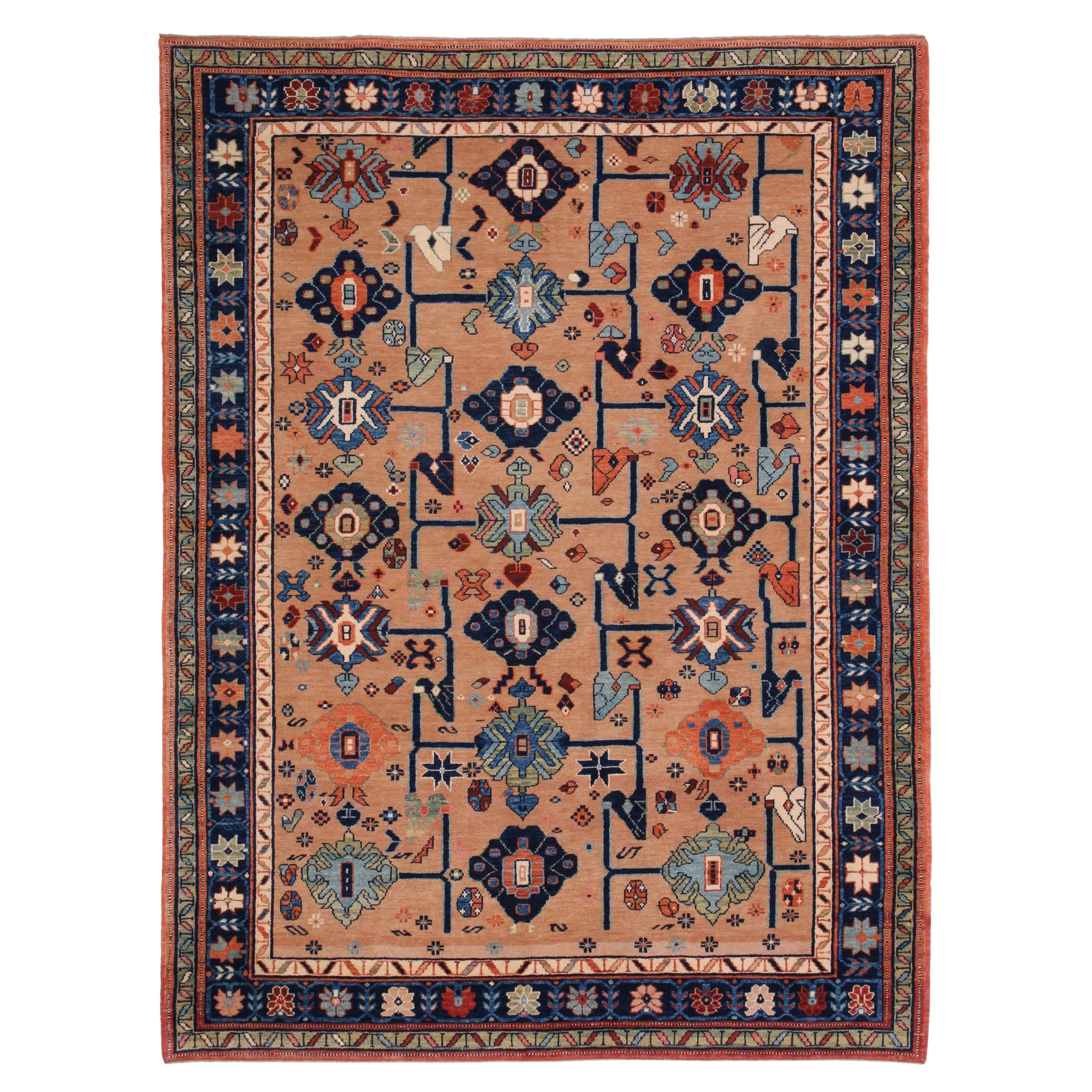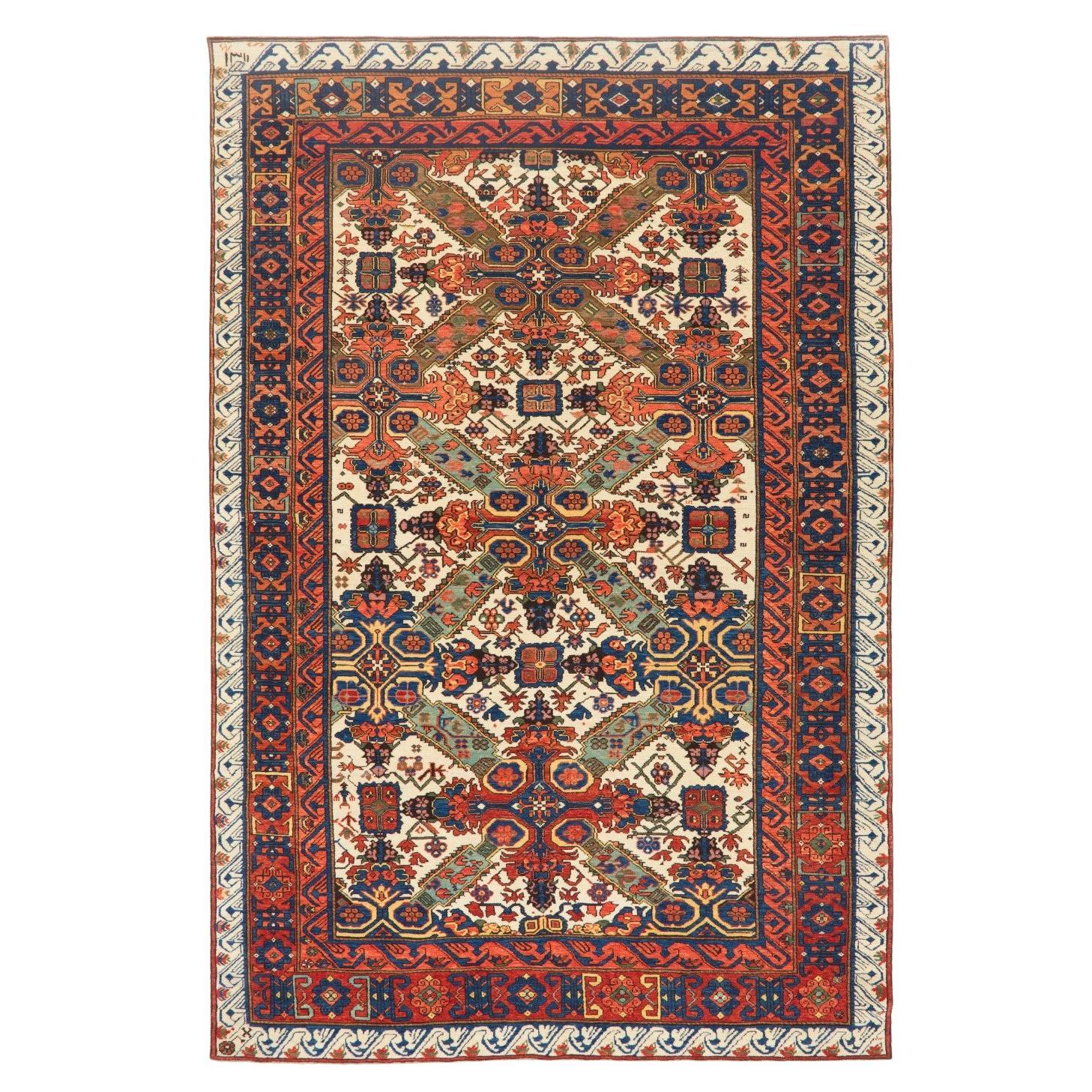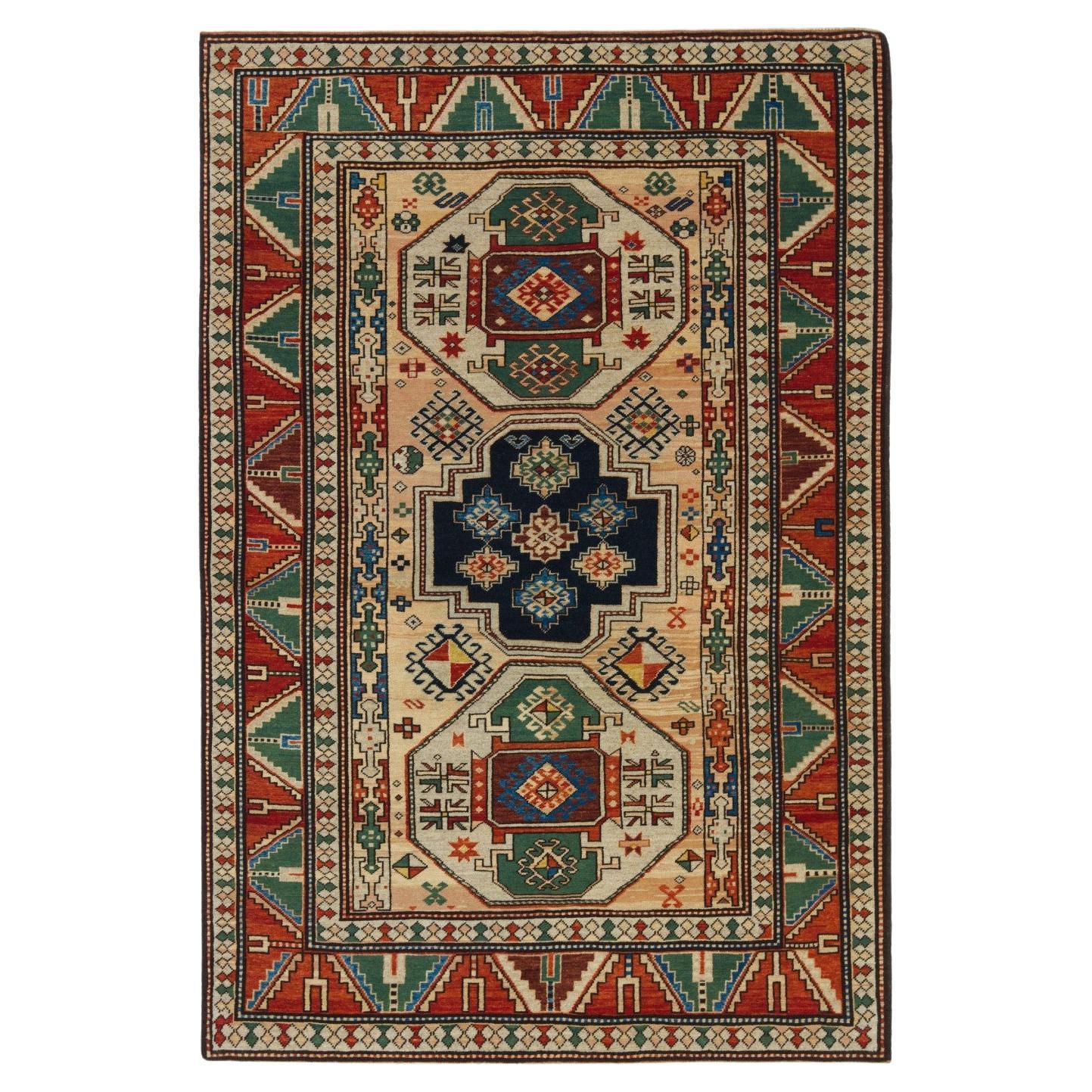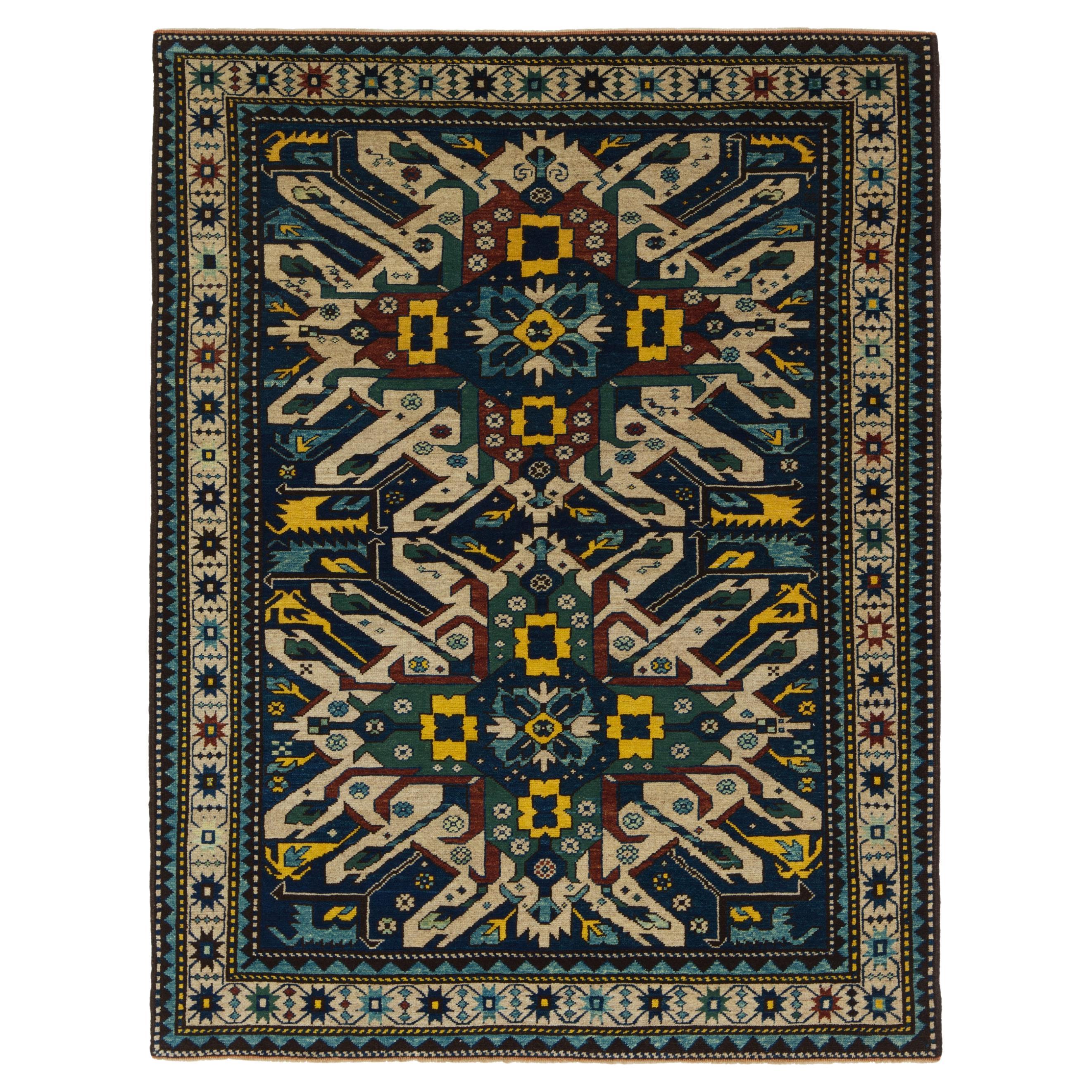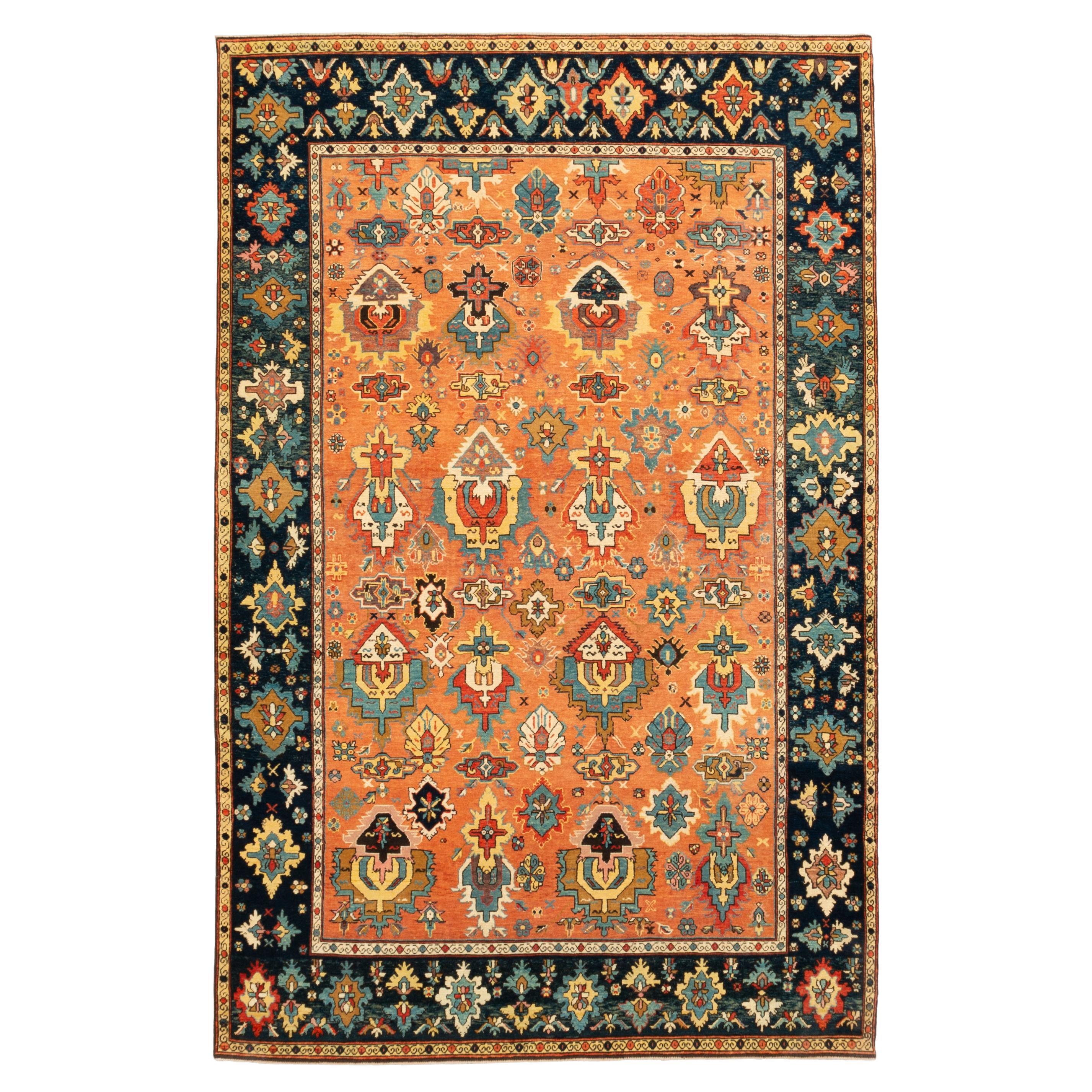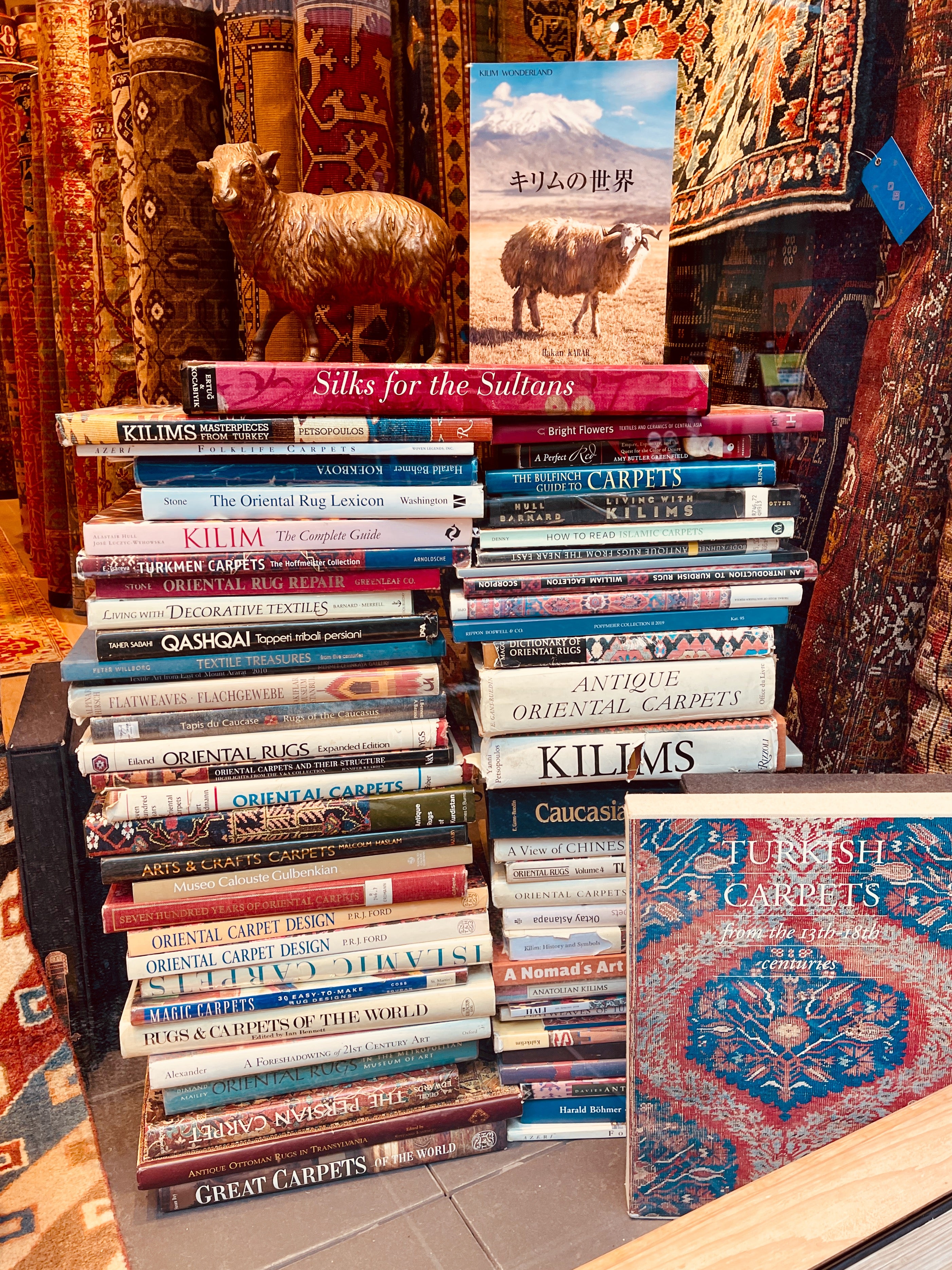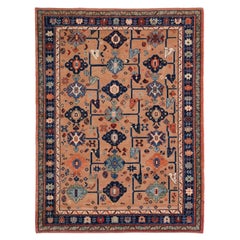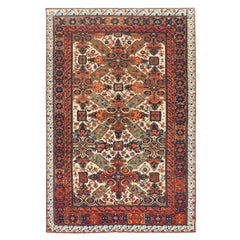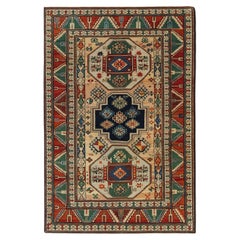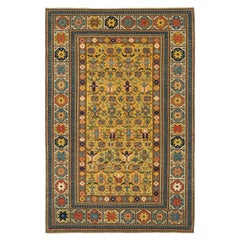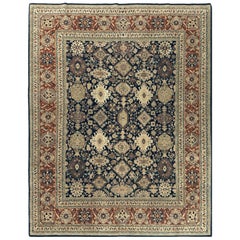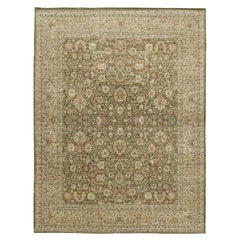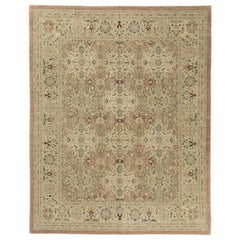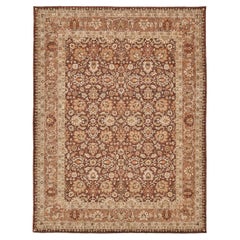Items Similar to Ararat Rugs Mina Khani Karabagh Rug, Caucasus Revival Carpet, Natural Dyed
Video Loading
Want more images or videos?
Request additional images or videos from the seller
1 of 7
Ararat Rugs Mina Khani Karabagh Rug, Caucasus Revival Carpet, Natural Dyed
$5,000
£3,756.14
€4,331.44
CA$6,938.15
A$7,709.82
CHF 4,040.03
MX$94,547.17
NOK 51,528.18
SEK 48,475.82
DKK 32,328.03
Shipping
Retrieving quote...The 1stDibs Promise:
Authenticity Guarantee,
Money-Back Guarantee,
24-Hour Cancellation
About the Item
The source of the rug comes from the book oriental rugs volume 1 Caucasian, Ian Bennett, Oriental Textile Press, Aberdeen 1993, nr.250-251. This is a floral composition lattice rug from the late 19th century, Karabakh region, Caucasus area. This stylized lattice design, with its flowers, is known as the mina-khani and is found in various forms on the rugs of many tribes in Persia, particularly those of the Kurds and Baluch. The handling of the design on this rug suggests a north Persian/Kurdish origin seems more likely, it is also found on Kurdish and other Persian tribal pieces, especially those from around the Veramin area in north Persia. The design of this rug is interpreted by our designers and soft colors are chosen for this rug.
Color summary: 10 colors in total, most used 4 colors are;
Dusty Turquoise 340 (Spurge – Madder Root – Indigo – Walnut Husk)
Tussock 550 (Madder Root – Walnut Hulls)
Burnt Coffee 102 (only specially washed)
Russian Green 418 (Henna – Indigo)
Group: Caucasian Rugs Family
Area: Karabagh region
Material of Pile: Natural dyed hand-spun wool
Material Warp / Weft: Wool on wool
Structure: Symmetrical knot
Knots Density: 36 x 29
Production Place: Southeastern Anatolia – Diyarbakir
Stock Location: Tokyo
Size (EU): 281 x 173cm
Size (US): 9'2" x 5'8"
Area (EU): 4.9m²
Area (US): 52.3ft².
- Creator:Ararat Rugs (Manufacturer)
- Dimensions:Width: 68.12 in (173 cm)Length: 110.63 in (281 cm)
- Style:Revival (In the Style Of)
- Materials and Techniques:
- Place of Origin:
- Period:
- Date of Manufacture:2022
- Production Type:New & Custom(One of a Kind)
- Estimated Production Time:Available Now
- Condition:
- Seller Location:Tokyo, JP
- Reference Number:1stDibs: LU8206232799932
ARARAT RUGS
We know and believe that the geography we come from, our past, and our lifestyle are the most important bond between us to carry the oriental carpet art and culture to the next generations along with our core values in our ongoing growth journey.
We are aware that the way to achieve this goal and carry this priceless art and culture to the future depends on a lot of work with all our people every day while adhering to our core values.
For us, art is meaningful in the sense that it brings together various cultures around the world. It is an honor for us that oriental carpet art and culture have been instrumental in this for centuries and that we are a part of this business.
We are tirelessly keeping an eye on auction house information around the world about carpets. New York's Metropolitan, London's Victoria & Albert Museums, and other famous art museums, as well as small specialized museums that house private collections, and books about oriental carpets to collect information on outstanding carpet designs and patterns from around the world. It's our Self-improving and Self-developing culture.
As Turkish Culture of Hospitality, the Kurdish Culture of Generosity, and as Japanese Culture of Business Punctuality; are the most important values that this multicultural background has taught and bequeathed to us. It is essential and valuable for us that you feel this feeling not only by looking at our oriental carpets but from the moment you contact us.
About the Seller
5.0
Platinum Seller
Premium sellers with a 4.7+ rating and 24-hour response times
Established in 1970
1stDibs seller since 2023
55 sales on 1stDibs
Typical response time: 3 hours
- ShippingRetrieving quote...Shipping from: Tokyo, Japan
- Return Policy
Authenticity Guarantee
In the unlikely event there’s an issue with an item’s authenticity, contact us within 1 year for a full refund. DetailsMoney-Back Guarantee
If your item is not as described, is damaged in transit, or does not arrive, contact us within 7 days for a full refund. Details24-Hour Cancellation
You have a 24-hour grace period in which to reconsider your purchase, with no questions asked.Vetted Professional Sellers
Our world-class sellers must adhere to strict standards for service and quality, maintaining the integrity of our listings.Price-Match Guarantee
If you find that a seller listed the same item for a lower price elsewhere, we’ll match it.Trusted Global Delivery
Our best-in-class carrier network provides specialized shipping options worldwide, including custom delivery.More From This Seller
View AllArarat Rugs Mina Khani Karabagh Rug, Caucasus Revival Carpet, Natural Dyed
By Ararat Rugs
Located in Tokyo, JP
The source of the rug comes from the book Oriental Rugs Volume 1 Caucasian, Ian Bennett, Oriental Textile Press, Aberdeen 1993, nr.250-251. This is a...
Category
21st Century and Contemporary Turkish Revival Caucasian Rugs
Materials
Wool, Natural Fiber, Organic Material
Ararat Rugs Seichur Kuba Rug Caucasian Antique Kazak Revival Carpet Natural Dyed
By Ararat Rugs
Located in Tokyo, JP
The source of the rug comes from the book Tapis du Caucase - Rugs of the Caucasus, Ian Bennett & Aziz Bassoul, The Nicholas Sursock Museum, Beirut, Lebanon 2003, nr.90 and Oriental R...
Category
21st Century and Contemporary Turkish Revival Caucasian Rugs
Materials
Wool, Natural Fiber, Organic Material
Ararat Rugs Lori Pambak Kazak Rug, 19th C Caucasus Revival Carpet Natural Dyed
By Ararat Rugs
Located in Tokyo, JP
The source of the rug comes from the book Oriental Rugs Volume 1 Caucasian, Ian Bennett, Oriental Textile Press, Aberdeen 1993, pg.24. This is a medallion rug from the late 19th cent...
Category
21st Century and Contemporary Turkish Revival Caucasian Rugs
Materials
Wool, Natural Fiber, Organic Material
Ararat Rugs Chichi Kuba Rug Antique Caucasus Revival Oriental Carpet Natural Dye
By Ararat Rugs
Located in Tokyo, JP
The design source of the rug comes from the book Oriental Rugs Volume 1 Caucasian, Ian Bennett, Oriental Textile Press, Aberdeen 1993, nr.360. The alternating row of octagons and spi...
Category
21st Century and Contemporary Turkish Revival Persian Rugs
Materials
Wool, Natural Fiber, Organic Material
Ararat Rugs Chelaberd Karabakh Rug Antique Caucasian Revival Carpet Natural Dyed
By Ararat Rugs
Located in Tokyo, JP
The design source of the rug comes from the book Tapis du Caucase – Rugs of the Caucasus, Ian Bennett & Aziz Bassoul, The Nicholas Sursock Museum, Beirut, Lebanon 2003, nr.29 and Oriental Rugs Volume 1 Caucasian, Ian Bennett, Oriental Textile Press, Aberdeen 1993, nr.93 and Caucasian Carpets, E. Gans-Reudin, Thames and Hudson, Switzerland 1986, pg.144. This is a large medallion rug from the late 19th century, Karabakh, Chelaberd (a village slightly to the southeast of Chondzoresk) region, Caucasus area. At Chelaberd, carpets were manufactured according to strict regulations; and, as a result, dimensions, motifs, and borders are approximately the same throughout. This example bears large medallions on its red ground; the colored features stand out well against the white ground. There has been all manner of suggestions as to the identity of this cruciform motif spiked with long-stemmed flowers: according to various traditions, it has been taken for a bird in flight, a sun flashing its beams of light, crossed swords, or even the coat of arms of a family or town. As a result, this type of carpet is habitually called an ‘Eagle Kazak (Adler in German)’, ‘Sun or Sunburst Kazak...
Category
21st Century and Contemporary Turkish Revival Caucasian Rugs
Materials
Wool, Natural Fiber, Organic Material
Ararat Rugs Palmettes in the Esfahan Manner Rug, Revival Carpet, Natural Dyed
By Ararat Rugs
Located in Tokyo, JP
The source of the rug comes from the book Orient Star - A Carpet Collection, E. Heinrich Kirchheim, Hali Publications Ltd, 1993 nr.75. This offset pattern is composed of ascending sh...
Category
21st Century and Contemporary Turkish Revival Persian Rugs
Materials
Wool, Natural Fiber, Organic Material
You May Also Like
Natural Dye Sarouk Farahan Style Rug
By Mehraban Rugs
Located in WEST HOLLYWOOD, CA
A detailed natural dye Sarouk Farahan style rug. This beautiful recreation encompasses traditional Sarouk Farahan motifs and weaves in deep blue, red, and ivory colors. Sarouk Faraha...
Category
21st Century and Contemporary Afghan Sarouk Farahan Central Asian Rugs
Materials
Wool
Fine Natural Dye Tabriz Hadji Jalili Revival Rug
By Mehraban Rugs
Located in WEST HOLLYWOOD, CA
An exceptional revival of Hadji Jalili Natural Dye Tabriz rug that immensely encompasses the beautiful blooming scrolls and traditional Persian designs in a forest green field that k...
Category
Early 2000s Pakistani Central Asian Rugs
Materials
Wool
Natural Dye Sarouk Farahan Style Rug
By Mehraban Rugs
Located in WEST HOLLYWOOD, CA
A detailed natural dye Sarouk Farahan style rug. This beautiful recreation encompasses traditional Sarouk Farahan motifs and weaves in warm tan and spice colors. Sarouk Farahans typi...
Category
21st Century and Contemporary Afghan Sarouk Farahan Central Asian Rugs
Materials
Wool
Natural Dye Tabriz Hadji Jalili Style Rug
By Mehraban Rugs
Located in WEST HOLLYWOOD, CA
An elegant revival of Hadji Jalili has a neutral ground with sand and tan motifs that are accentuated with walnut-colored outlines. An all-over pattern that has finely rendered motif...
Category
21st Century and Contemporary Afghan Tabriz Central Asian Rugs
Materials
Wool
Early 20th Century Caucasian Karabagh Carpet ( 3'6" x 7'2" - 107 x 218 )
Located in New York, NY
Early 20th Century Caucasian Karabagh Carpet ( 3'6" x 7'2" - 107 x 218 )
Category
Antique Early 1900s Caucasian Kazak Caucasian Rugs
Materials
Wool
35" x 80" Antique Caucasian Daghestan Runner Rug
Located in Spring Valley, NY
A mid-19th century North East Caucasian rug with a sought after yellow field and beautifully saturated natural dyes. Medium wool pile on wool foundation. Very good condition. Sturdy ...
Category
Antique Mid-19th Century Caucasian Kazak Caucasian Rugs
Materials
Wool
